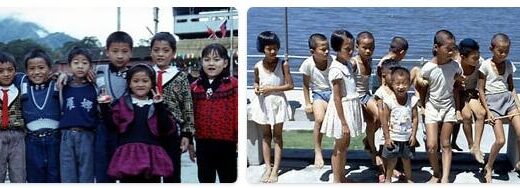What to See in Laos
Pakse, Champasak Province (Laos)
Pakse is located in southern Laos on a peninsula bounded to the south by the Mekong and to the west and north by the Sedon River. It was founded by the French in 1905 as an administrative center, and is currently the capital of Champasak Province.
Pakse is the third largest city in the country, a river port and the center of the agricultural region of the Bolaven Plateau. Highway 13, the main highway of the country, passes through the northern part of the Old City from west to east. Most of the city’s boarding houses, hotels, shops, travel agencies and restaurants are concentrated on it. To the west on the same road are the airport (2 km from the city) and the northern bus station (8 km from the city).
The city itself is not very interesting, most often it is used by tourists as a starting point for other excursions to the south of Laos, for example, to the Bolaven plateau, to the ruins of the Khmer temple of Pu Champasak (Wat Phu Champasak), to Sipandon or the Four Thousand Islands (Si Phang Don.
The Bolaven Plateau is known as a great trekking destination and you can also ride elephants here. There are many beautiful waterfalls on the plateau, there are interesting villages in which the traditional way of life has been preserved, there are coffee and tea plantations.
Pu Champasak Temple belongs to the Angkor period. It stands on a hill at an altitude of 607 m in the place where the spring once flowed. Historians believe that the temple was a sacred site of the pre-Angkorian kingdom of Chenla and may have been used for human sacrifice. Its layout forms a logical sequence of three levels with a long walkway connecting them. The harmonic transition from the river to the valley and then to the mountain was supposed to serve as the personification of the power of the cult.
In the very south of Laos, in the province of Champasak, there is a place called Si Phang Don., which in translation means 4 thousand islands. The name is not accidental, in this place the Mekong floods and forms many small and large islands, the number of which increases greatly during the dry season, when the river becomes shallow. The largest of the permanently existing islands are inhabited all year round and provide an opportunity to get up close and personal with the life of the coastal villages. The French left here several colonial villas on the islands of Don Khong, Don Det and Don Khon. On the island of Don Khon, the remains of a railway and a pier built by the French have been preserved. Other attractions of this island are waterfalls and a rare species of river dolphin. Khon Phapheng Falls, the largest waterfall in Southeast Asia, is located 15 kilometers from Don Khon Island. There are many restaurants around the waterfall, there is an observation deck,
Phonsavan (Laos)
Phonsavan is the capital of Xieng Khouan province in northeastern Laos. The city is located at an altitude of 1200 m and pleases its visitors with a mild climate.
The main attraction of this area is the Plain of Jars . It is located on the Xiangkhuang Plateau and is easily accessible from Phonsavan. The valley belongs to the megalithic era and is one of the most mysterious monuments in the culture of the ancient peoples of Indochina. More than 300 huge stone vessels, as if grown into the ground, are scattered in groups across the plain among tropical greenery. Some vessels weigh up to 6 tons.
52 km north of Phonsavan there are two hot springs, Bo Noi and Bo Yai, where you can bathe.
Sarawan (Laos)
According to Intershippingrates, Sarawan is located in southern Laos, 100 kilometers northeast of Pakse, and is the capital of Sarawan Province. This province is known mainly for the Bolaven Plateau. It is well suited for trekking, here you can also ride elephants. There are many beautiful waterfalls on the plateau, there are interesting villages in which the traditional way of life has been preserved, there are coffee and tea plantations.
The Phu Xieng Thong Conservation Area has also been established in the province. It occupies an area of about 1000 km 2 where a large number of wild animals are protected.
Xienkhuang (Laos)
Xieng Khuang is located in the province of the same name, the main attraction of which is the famous Plain of Jars.
The valley is located on the Xiengkhuang plateau. The valley belongs to the megalithic era and is one of the most mysterious monuments in the culture of the ancient peoples of Indochina. More than 300 huge stone vessels, as if grown into the ground, are scattered in groups across the plain among tropical greenery. Some vessels weigh up to 6 tons. The purpose of these jugs is still unknown.



